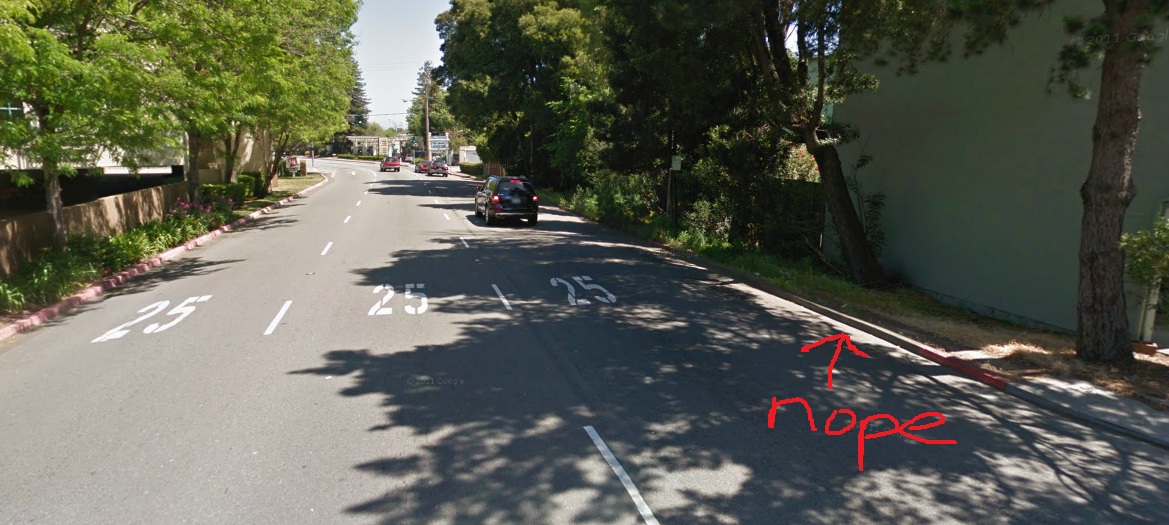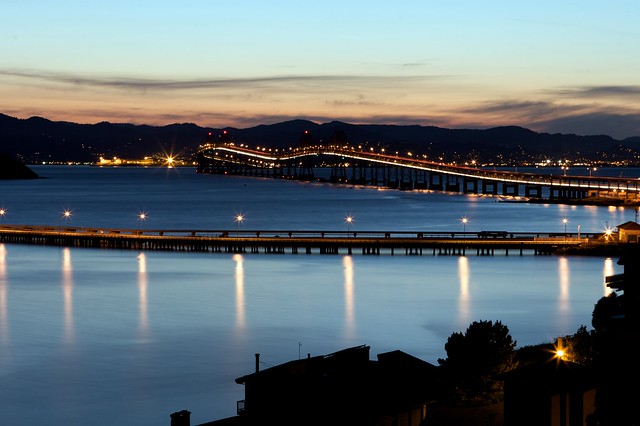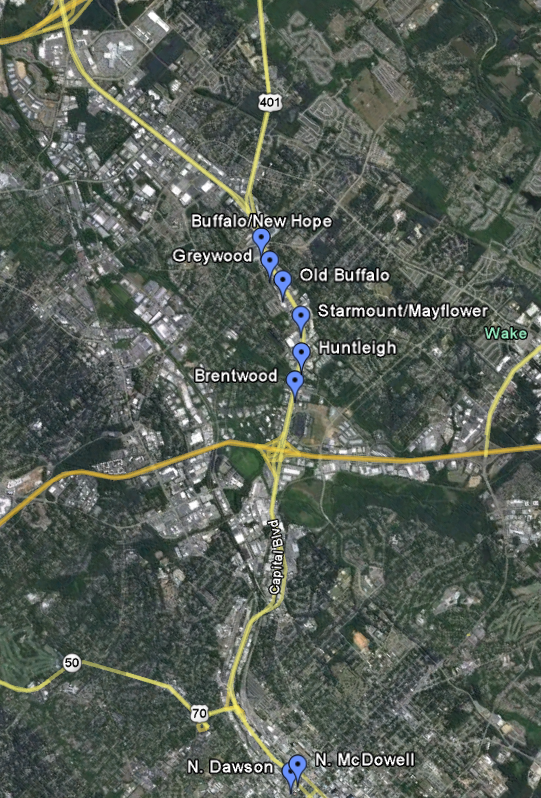On December 10th, 2012, the Sonoma County Transportation Authority Board of Directors approved programming $6.6 million of the County’s $9.9 million pot of federal Congestion Mitigation Air Quality (CMAQ) funds to Sonoma Marin Area Rail Transit (SMART) for the purchase of an additional train set.
We know you are probably having some feelings about this decision, among them anger and confusion.
SCBC’s here to provide for you some context, describe the circumstances around the vote, explain what the vote means for bicycling in Sonoma County, share our position on the vote, and our strategy moving forward.
The Context
Sonoma County Transportation Authority (SCTA) coordinates transportation planning and funding throughout the County. Most of the transportation funding that SCTA receives is programmed through the Metropolitan Transportation Commission (MTC), SCTA’s Regional counterpart, which manages transportation planning and funding for the 9 Bay Area Counties.
SCTA works to bring to Sonoma County funding for highways, roads, transit, and bicycle and pedestrian projects. This is a complex and wonky process comprising many pieces. There are various “pots” of federal and state money that filter through MTC to SCTA.
One of these pots is CMAQ. These federal funds can be used for projects that help reduce traffic congestion and air pollution. A variety of project types are eligible for CMAQ funding, including, but not limited to, transit, bicycle, and pedestrian projects. In Sonoma County, CMAQ has historically been a significant (if not the top) source of funding for bicycle pedestrian projects. SCTA programs these funds to eligible projects through a competitive process in 2-4 year cycles.
The concerned $9.9 million pot of CMAQ funding (mentioned in the introduction) is for projects through 2016, and is set to be programmed starting in 2013. Over the past year, each of the nine cities in Sonoma County, the County of Sonoma, and SMART itself, have been able to submit projects to be considered for CMAQ funding. These jurisdictions submitted to SCTA by a November 30th deadline $38 million worth of projects deemed eligible for CMAQ funding. Under the normal SCTA process, these eligible projects in 2013 would have to compete for shares of the $9.9 million of available CMAQ funding.
The Vote
On Thursday, December 6th, Sonoma County Bicycle Coalition learned that SMART was to make a special request to the SCTA Board of Directors at the latter’s December 10th meeting. Based on our understanding, other stakeholders and the members of the SCTA Board of Directors learned of this request the same day as did SCBC.
SMART’s request was that the SCTA Board agree to put ahead of all other CMAQ-eligible projects its own eligible request for $6.6 million to purchase an additional train set. The SCTA Board was asked to vote on whether to program this funding without putting SMART ‘s request through SCTA’s regular competitive process.
SMART asserted that it needs the train set in order to provide full service to the North Santa Rosa station at the time the Initial Operating Segment (the “IOS” – North Santa Rosa to San Rafael) opens in 2015 or 2016. SMART asserted that full service to this station (rather than the 2/3 service possible without it) is critical because North Santa Rosa station represents 80% anticipated ridership for the Sonoma County portion of the IOS.
SMART argued that going outside the normal SCTA process was necessary because SMART must order the train set by the end of 2012 for two reasons: 1) SMART will be able to get the additional train set for the same price as those it has already ordered; and 2) If SMART does not order now, the new train set will not arrive until 2018, well after SMART begins service on the IOS.
After asking some good questions, hearing public comment by 7 people (including SCBC Outreach Director Sandra Lupien), and a good amount of discussion, the SCTA Board voted 10-2 to approve SMART’s request. Almost every member of the Board said they were unhappy with the ramifications of their decision for available bicycle/pedestrian funding, and expressed that it was a very difficult decision to make.
What it means for bike/ped
By approving SMART’s request for $6.6 million, the SCTA Board has left just $3.3 million in CMAQ funds available for about $31 million in CMAQ eligible projects. It is hard to tell based on the project list overview what portion of the projects submitted by cities and the County are bicycle projects. It looks like most of them are multi-use projects that include some combination of roadway improvements that may include bicycle lanes, sidewalks, and crosswalks. There are a few multi-use Class I projects on the list. The largest share of bike/ped projects on the list are segments of the SMART Multi-use Pathway.
These bicycle-pedestrian projects will, through SCTA’s normal process, have to compete against each other and the other eligible projects for a much smaller pot of money. That could mean that important bicycle-pedestrian projects could be more likely to be delayed until a later funding cycle.
When voting on SMART’s request on December 10, several members of the Board expressed hope that SCTA would prioritize the bicycle-pedestrian projects for the remaining $3.3 million in funding. The Board also directed staff to allow jurisdictions to re-submit their CMAQ-eligible projects to enable jurisdictions to prioritize projects based on the smaller pot of money.
Finally, SCTA staff did mention that there is $1.4 million in potential bike/ped funding through the Transportation Alternatives Program (TAP), and $11.4 million available in Surface Transportation Projects (STP) funding that can be used for bike/ped.
SCBC’s position
This decision SMARTs for sure, but we want to be sure that SCBC’s position is clear. There are parts of this whole situation that we don’t like, parts we think are not a huge deal, and parts that we think need a little clarifying.
What we really don’t like
1. SMART jumped the queue with an 11th hour request – Based on the conversation on December 10th, SCBC can understand why SMART needs to buy the train set by the end of the year, particularly because a 2018 arrival of the train set would be too late. What we don’t understand is why SMART waited until the last minute to make the request. When SMART announced in early 2012 that it was able to add the North Santa Rosa Station to the Initial Operating Segment, it announced that it could only offer 2/3 service to that station with its budgeted equipment. That left nearly a year to figure out how to get the train set needed to offer full service to North Santa Rosa. A few months – rather than a few days -- lead time on SMART’s request would have allowed the SCTA Board of Directors to make a more well-reasoned decision, explore other options, etc.
2. SMART did not notify stakeholders (other agencies, public works departments, SCBC) that it planned to make this significant request. The lack of communication left SCBC – and probably other stakeholders – feeling blindsided.
3. This process has made clear that SCTA’s CMAQ-eligible project list does not include a satisfactory number of competitive, deliverable bicycle projects. This, in spite of the fact that each municipality has excellent bicycle/pedestrian projects planned. This means that jurisdictions are not submitting their bike/ped projects for funding.
4. This vote by the SCTA Board threatens to delay some projects for several years. We don’t like to see any bicycle/pedestrian project delayed. We think that the need to increase safe bicycle access must be prioritized and that jurisdictions must build out their bike/ped plans.
What is not that big of a deal:
1. Using CMAQ money to support important transit project in our County -- SMART -- is a legitimate use of this funding source.
What is worth noting:
1. The availability of the $1.4 million in TAP funds is a good thing, and so is the potential availability of $11 million in STP funds. Both of these funds are also competitive and by no means limited to bike/ped projects.
What SCBC is going to do
1. Status of the Multi-use Pathway (MUP)
Many people appear to be under the mistaken notion that this decision somehow means that SMART has cut the multi-use pathway from the project. This decision is not related to the MUP in any way. That said, SCBC does hear concerns from the bicycle community as to whether SMART does in fact intend to build the pathway as planned. While we are aware that segments of the MUP are currently under construction, and more will be under construction in the Spring, we believe that SMART owes the bicycle community a strong and direct commitment. Therefore, we will meet with SMART next week and demand that SMART provide public assurances that the MUP is, was, and always will be a part of the SMART project. We will also urge SMART to make a public statement as to the status of the various segments of the MUP and when they’re expected to be completed.
2. SMART as a community partner
We will explain to SMART that the agency must be a transparent, communicative community partner that engages key stakeholders in key decisions.
3. Urge SCTA to prioritize bike projects
As noted above, some members of the SCTA Board expressed hope that bike/ped projects would be prioritized for the remaining CMAQ money. We will push SCTA to honor this sentiment with action. We will also push SCTA to fund bike/ped projects with the $1.4 million in available TAP funds, and with some of the $11m in available STP funds.
4. Push for more, deliverable bike projects
As noted above, this decision has made clear that for some reason, the various jurisdictions are not submitting their compelling bike projects for CMAQ funding. We are going to work with public works departments to find out why they’re not bringing forth their bike projects, and to provide support and encouragement to help them do so moving forward. Every community in Sonoma County has great plans for bikes; we need the jurisdictions to prioritize getting those projects funded, implemented, and open to the public!
Thank you for taking the time to read and understand this situation. Here is what you can do to help:
1. Join Sonoma County Bicycle Coalition. We are your voice! We’re here to fight for bicycle projects. Your membership makes SCBC more influential.
2. Get everyone you know to join Sonoma County Bicycle Coalition.
3. Make an end-of-the-year donation to Sonoma County Bicycle Coalition. We’re not kidding around. Donations and membership dues make it possible for us to represent the bicycle community. We get grants for programs like Safe Routes to School, but grants are not available to fund our advocacy efforts. It’s up to you!
4. Write to your elected officials, to the SCTA Board of Directors, and to the SCTA Executive Director. Let them know you want them to prioritize funding for bicycle projects in Sonoma County and in your city. If you need help finding these email addresses, please contact SCBC.
Please call us at 707-545-0153 if you have any questions. You may also email Sandra@BikeSonoma.org.
SCBC is here to fight to create the safe, accessible, amazing bicycle community we want to see; together with you, we’re making it happen!
This piece was cross-posted from the Sonoma County Bicycle Coalition blog.
 Recently, I was driving down Second Street on my way to Pacifica and I noticed something I’d never noticed before: a block without a sidewalk, in downtown San Rafael.
Recently, I was driving down Second Street on my way to Pacifica and I noticed something I’d never noticed before: a block without a sidewalk, in downtown San Rafael.




 SMART was making news this week, what with TAM
SMART was making news this week, what with TAM